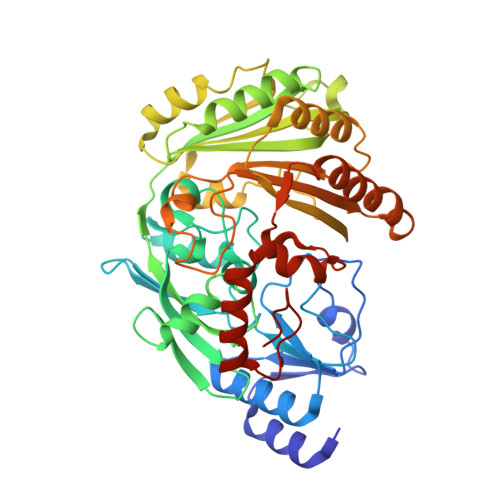Enzymatic control of dioxygen binding and functionalization of the flavin cofactor.
Saleem-Batcha, R., Stull, F., Sanders, J.N., Moore, B.S., Palfey, B.A., Houk, K.N., Teufel, R.(2018) Proc Natl Acad Sci U S A 115: 4909-4914
- PubMed: 29686059
- DOI: https://doi.org/10.1073/pnas.1801189115
- Primary Citation of Related Structures:
6FOQ, 6FOW, 6FP3, 6FY8, 6FY9, 6FYA, 6FYB, 6FYC, 6FYD, 6FYE, 6FYF, 6FYG - PubMed Abstract:
The reactions of enzymes and cofactors with gaseous molecules such as dioxygen (O 2 ) are challenging to study and remain among the most contentious subjects in biochemistry. To date, it is largely enigmatic how enzymes control and fine-tune their reactions with O 2 , as exemplified by the ubiquitous flavin-dependent enzymes that commonly facilitate redox chemistry such as the oxygenation of organic substrates. Here we employ O 2 -pressurized X-ray crystallography and quantum mechanical calculations to reveal how the precise positioning of O 2 within a flavoenzyme's active site enables the regiospecific formation of a covalent flavin-oxygen adduct and oxygenating species (i.e., the flavin-N5-oxide) by mimicking a critical transition state. This study unambiguously demonstrates how enzymes may control the O 2 functionalization of an organic cofactor as prerequisite for oxidative catalysis. Our work thus illustrates how O 2 reactivity can be harnessed in an enzymatic environment and provides crucial knowledge for future rational design of O 2 -reactive enzymes.
- Center for Biological Systems Analysis (ZBSA), University of Freiburg, 79104 Freiburg, Germany.
Organizational Affiliation:

















